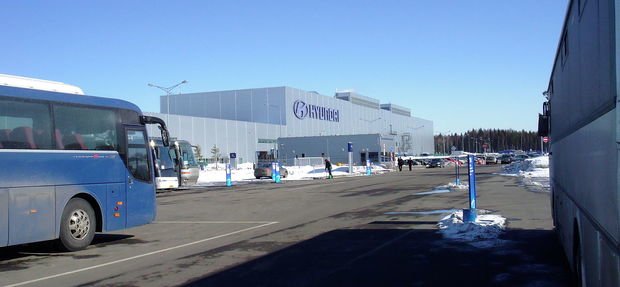Auto industry considering additional localisation in Russia to meet new state regulations
The Russian government is going to raise duties on imported automotive components from 2019. Carmakers will have to increase their localisation level to qualify for state aid. Automotive companies have already begun preparing for the new requirements, but for some of them, additional localisation is economically infeasible.
Russia's Ministry of Industry and Trade wants carmakers to make huge investments in new production capacity in Russia over the coming decade, says Automotive Logistics. The ministry is going to cancel existing industrial assembly agreements to realise a new national localisation strategy. A corresponding bill published in August affects all foreign automotive producers with assembly plants in Russia by making them pay higher import duties on components. As a result, some original equipment manufacturers may revise their localisation strategies in Russia and shift from manufacturing models to importing them as finished vehicles, considers Alexey Seryozhenkin, deputy executive director of the Association of Russian Automakers.
Another decree published by the Ministry of Industry and Trade reads that the government will subsidise up to 90% of the costs associated with the increased import duties to carmakers whose vehicles achieve made-in-Russia status. A new points-based assessment of localisation level will be used to confirm the status. To qualify for state support, carmakers will have to score 100 points from 2019 and 150 points from 2025. The points will be awarded for localising ''critically important components''. For example, using localised engines or transmissions will score 40 points. Although the complete list of components and points has yet to be finalised, it is clear that meeting new targets will require substantial investment by carmakers.

A number of producers have already confirmed that they were seeking new localisation projects in Russia. Nissan-Renault-AvtoVAZ consortium can meet the new requirements without considerable investment, as the company's average localisation rate is already high (67%). However, the consortium is also considering new projects aimed at further localising engines and transmissions in Russia. Hyundai is also planning to build an engine plant in St Petersburg. The plant's production capacity is expected to be around 150,000 units a year, which is enough to provide all locally assembled vehicles with Russian-made engines. Volkswagen is planning to localise more deeply rather than more broadly by engaging with local second and third-tier suppliers.
However, meeting the targets of the new localisation system may be economically infeasible for some carmakers. Establishing a local engine or transmission plant makes sense only if it designed to manufacture 100,000 units a year with a utilisation factor of over 80%, said an unnamed assembly plant source, adding that some might find it more attractive to ignore state support and import their components under higher duties. ''For some carmakers, there is no sense in allocating additional investments to their Russian operations as long as demand on the Russian market is still far from the 5 million finished vehicles a year promised by the government in 2012,'' the source summarised.